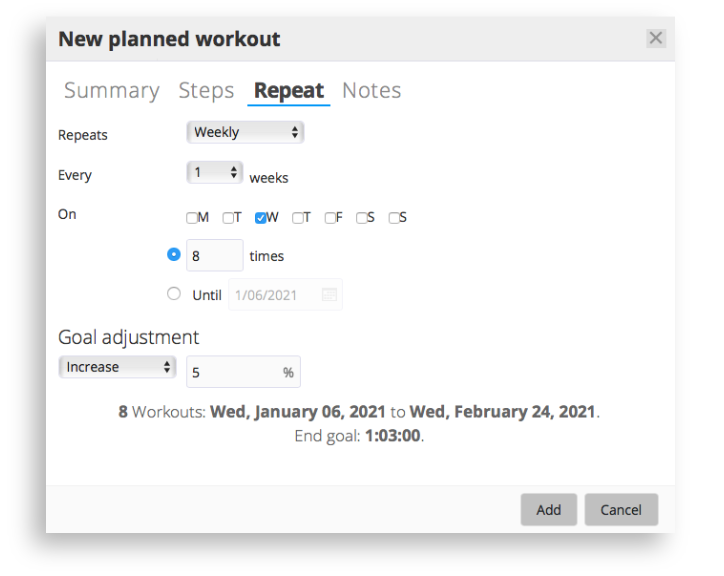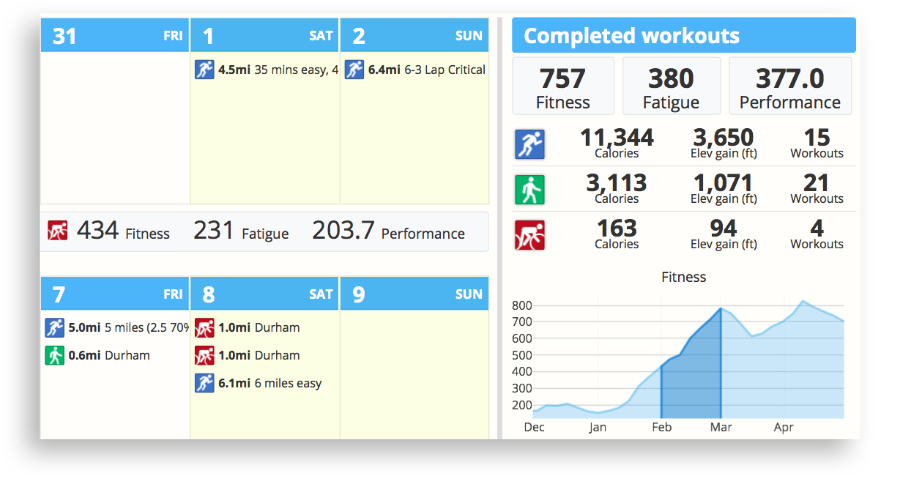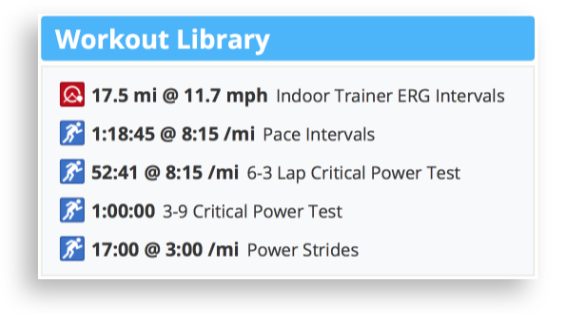Plan Your Year in SportTracks
How the SportTracks calendar can help you achieve your goals
Tracking and analyzing workout data is incredibly useful and can help you achieve faster times and new personal records while avoid injuries and burnout, but in order to get there you need to embrace the planning aspect of training — and the best way to do that is to utilize the powerful features in the SportTracks calendar.
Where to start?
At the beginning of a normal year, the first thing to do is to look at the next 12 months and decide which race is the most important to you. This is your "A-Race." In our current pandemic, this can be challenging. Your biggest event could be a virtual race or an individual time-trial effort, or you may be avoiding competitions until 2022. No matter where you stand, planning your workouts is still vitally important.
One of the major benefits of planning isn't just to perform your best in the current year, it's about building and getting stronger in the years to come. What you achieve in 2021 will be the starting point of what you can do in 2022 and beyond. If your goals begin in 2022, you need to optimize your 2021 training cycles to be primed for success.
If your dream race is in question in 2021, train intelligently now and crush it even harder in 2022.
Whether your A-Race is this year or you want to create a series of slow-build and recovery cycles in preparation for 2022, the best way to start organizing your training is to plan workouts. If you already have an established fitness routine, formally planning these workouts in your SportTracks calendar opens up an array of actionable insights you are otherwise missing.
Turn your routine into a plan
For example, say you're eight weeks away from starting a training plan. Or conversely, you just want to do your normal weekly workouts over the next eight weeks with a slight increase in intensity, and then have a short recovery period. If you're going to run and ride twice a week, without planning your calendar your training Load and performance charts may look like this:

Here's what they look like with planned workouts added:

Now you can clearly see how those workouts cumulatively work to increase your fitness, and using the convenient tools in the SportTracks calendar, you can plan months of workouts in just a couple of minutes.
When you select a future date in your calendar to plan a workout, you can do the basics like choosing a sport with a distance or time goal, or you can get more advanced by adding pace, power, heart-rate, or cadence targets. You can go even deeper by adding structured steps like warm-ups, intervals, and recoveries. Selecting the powerful Repeat tab lets you not only replicate a workout, but also add a gradual increase in intensity over time:

Planned workouts can be sent to Garmin watches and bike computers automatically by enabling our training integration, and your device will chime and vibrate to guide you through any multi-step workouts you have created. You can also easily export your planned workouts as FIT or TCX files to load into Garmin or other fitness tracking devices.
Embrace strategy and training cycles
With the understanding that each planned workout adds to the rise of your fitness trendline in your training load chart, you may be tempted to continue piling on workouts and increasing intensity until the stats are sky high. Unfortunately, your body will likely respond negatively to non-stop workout stress, and instead of progressing to new heights you will quickly plateau or suffer injury and setbacks.
A common practice is to structure your calendar based on seasons with intentional, elongated recovery periods between them to let your body partially detrain. This enables you to rebuild your fitness and come back stronger with each successive season. These are the tenets of periodization and other training approaches. In the course of 12 months, you should focus the most intense training and recovery on your A-Race, rather than doing this multiple times in a year.

You can easily customize the training data you see in the sidebar of your SportTracks calendar to focus on your performance metrics. This way, as you plan your workouts, you will see how they influence your predicted performance in real-time directly in your calendar. Your fitness, performance, and fatigue numbers will also display as weekly summaries in your calendar. These summaries can also easily be switched to display total distance, time, calories burned and more.

Your Workout Library can be found under the fitness data on your calendar's sidebar. Any workout you create in your calendar can be dragged and dropped on the Workout Library. This lets you easily use that workout again by dragging it from the library and dropping it on a date. You can also click and drag workouts from one calendar date to another to create a duplicate.
When you add a race to your SportTracks calendar, that date will be flagged as a visible event on your Health page, so you have a clear understanding of your state of readiness. You want your fitness line to peak close to the race date, with a healthy buffer above your fatigue line. Adding a race to your calendar also adds a countdown timer to your dashboard.

The SportTracks calendar does much more to support your training and racing needs. For example, when you select a date you can write a note, or track an injury. You can go into the sharing settings of your profile and set it to publish your planned workouts to iCalendar. We're always hard at work to make it the most well-rounded and friendly training tool of its kind.
Team SportTracks wishes you a happy and successful 2021 and beyond!
| Article written by Sam Mallery, Director of Marketing, Zone Five Software Inc. |

Comments
It would be great if you could also somehow label or color code periods in the calendar to mark the blocks in the mesocycle.
For what it is worth +1 to that.
Fully agree, would be great to have such color coding option together with the possibility to add some notes.